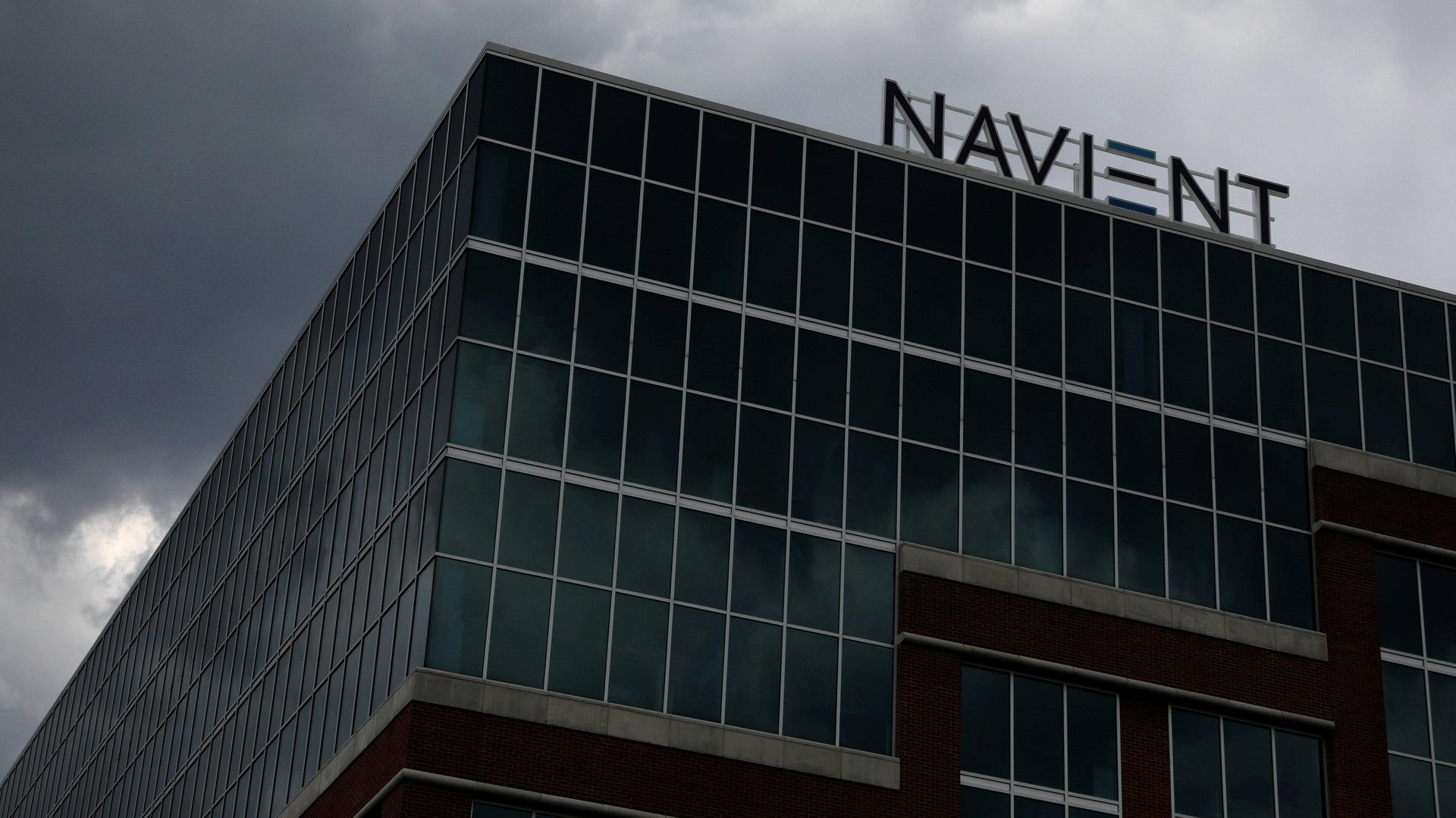Navient’s student loan settlement primarily applies to delinquent borrowers
For years, the student loan servicing company Navient allegedly encouraged student loan borrowers to enter costly long-term forbearance programs that pushed them further into debt, as well as take on private loans they couldn’t pay back, according to lawsuits filed by several states, and joined by 39 attorneys general.


For years, the student loan servicing company Navient allegedly encouraged student loan borrowers to enter costly long-term forbearance programs that pushed them further into debt, as well as take on private loans they couldn’t pay back, according to lawsuits filed by several states, and joined by 39 attorneys general.
Those claims were resolved through a settlement announced yesterday (Jan. 13) affecting some 400,000 borrowers. Navient says it will cancel $1.7 billion in private student loan debt for 66,000 borrowers, as well as pay an additional $95 million in restitution to 350,000 people with federal loans. The former deal mostly focuses on students who took out loans to attend for-profit colleges between 2002 and 2014.
“This is a really big day for people with student debt,” says Mike Pierce, executive director of the Student Borrower Protection Center. “Borrowers that are still struggling more than a decade later with loans, with the worst terms, after going to the worst schools, are finally debt free.”
Navient accused of predatory practices
The lawsuits accused Navient of engaging in two types of predatory behavior:
- Steering student loan borrowers into forbearance. According to the attorneys general, the loan servicer encouraged borrowers who were having trouble making their payments to enter forbearance, rather than consider an income-driven repayment plan, which can bring borrowers’ monthly payments down to $0, or the Public Service Loan Forgiveness Program. Forbearance can be costlier in the long-run, as loans accrue interest while borrowers miss payments, pushing them further into debt. “If you’re in forbearance, you’re not making progress to getting out of debt, you’re just racking up interest that you’ll have to deal with later,” Pierce says. The states’ investigations and a 2019 report by the education department’s office of inspector general found workers at Navient’s call center were pushed to move through clients quickly, prioritizing forbearance rather than recommending other repayment options, which tend to require more time and paperwork.
- Encouraging students to take out loans they couldn’t repay. The lawsuits also alleged Navient provided subprime private student loans to borrowers with low credit scores even though they knew there was a high chance they couldn’t repay them. Most of the students that received these loans were attending for-profit schools and colleges with low graduation rates that partnered with Navient. Under federal law, schools’ tuition payments can only be 90% federally funded, making institutions dependent on other types of private loans similar to what Navient provided. “The era of private loans was driven by these for-profit colleges trying to comply with that rule,” Pierce says.
Navient denies these charges, and said in a statement the settlement simply helps the company avoid “additional burden, expense, time and distraction to prevail in court.”
Who qualifies—and who doesn’t—for relief
While yesterday’s settlement is significant for private student loan borrowers in debt, it extends to just a fraction of the estimated 12 million student loan borrowers Navient has served since 2014.
Borrowers eligible for debt cancellation include those who took out private subprime student loans between 2002 and 2014 through the company’s predecessor, Sallie Mae. Borrowers who were behind on payments for seven consecutive months prior to June 30, 2021 qualify to have their loans canceled, but those who are current on their loans do not.
The $1.7 billion in relief is focused “only on borrowers that struggled to repay their loans,” Pierce explains. Borrowers who received non-subprime private student loans from Navient to attend a select list of for-profit schools, such as DeVry University and University of Pheonix, may also be eligible to have their debt canceled.
Additionally, borrowers from 38 states and the District of Columbia who took out federal loans through Navient and spent at least two years in forbearance between 2009 and 2017 are eligible for a $260 restitution payment from the settlement.
Yesterday’s settlement brought together attorneys general from both sides of the political spectrum on a typically divisive issue. Pierce hopes the the deal will pave the way for the Department of Education to provide relief to more federal loan borrowers who accrued debt due to Navient’s alleged predatory practices, as well as other servicers who engaged in similar behavior. The federal government only cut ties with Navient in September.
“The government should acknowledge that their contractors have cheated people out of income-driven repayment for decades,” Pierce says.